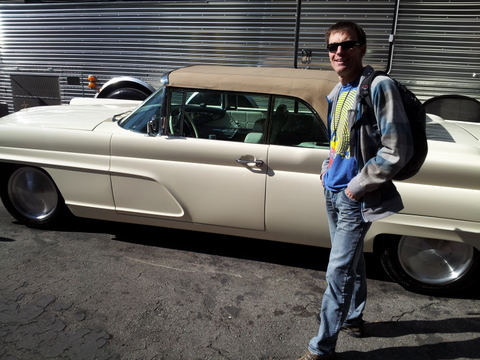
Some inconsequential thoughts on my holiday reading.
That Neil Young is a talented and successful musician and great song writer is undeniable. That he is particularly interesting and always on the right side of his causes is not quite so clear. But whatever we make of him as a person, he sure is committed, to his music and to his causes.
I have just finished his strange new book, Special Deluxe: A memoir of life & cars. Which left me knowing too much about the faded glory of old US auto land yachts and too little about what makes him tick. Well into the book, he comments that “Some things I have done are outside of whatever shed of reasoning I try to live by and are at best just examples of breaks from the norm. Maybe they are my attempts at change; maybe they represent something I don't understand. I don't think it's worth looking any further.” What is it they say about an examined life? Maybe this is a too late warning to us not to bother reading any further. Although actually what follows is his expensive and time consuming battle to convert an old Lincoln into an electric car, with a generator running on cellulosic ethanol.
Maybe us mortals do not always get the truly talented and driven. Certainly I fail to understand his fascination with old, often clapped out, gas guzzlers. Not just the buying and driving, but the keeping and sometimes partly completed restorations – the book is as littered with them as is his ranch apparently. Who out there remembers the 1957 Eldorado Biarritz Convertable, the 1954 Monarch Lucerne, 1948 Buick Roadmaster Flxible Hearse, the 1947 Buick Roadmaster Estate, the 1948 Continental, the 1934 Bently Close -coupled Coupe Mulliner and on and on? All rendered in quite delightful water colours in chapter front pieces. All owned and driven for various durations before dying.
As he became aware of GHG's, we get the charming understanding of just what some of these were emitting in pounds of CO2 per stylish mile. We get told, sometimes too often, that after such and such a many mile journey, “we got 18 mpg, with gas at 57 cents a gallon and that we deposited about 411 pounds of CO2 into the atmosphere.” This led to his use of bio diesel from re-cycled vegetable oil and then to the 1959 Lincoln Continental “Linkvolt”, which was rechristened Miss Pegi, after a fire.
Here he got pretty much conned by an initial smooth talker in Nevada (where else), but finally got it working sufficiently well to drive cross country via Canada on a gasoline free tour using cellulosic ethanol running a small Ford Escape motor as a generator (if I understand it all). This was in an effort to sway congress in Washington. Along the way he learns that many of the policy makers around George Bush II were thinking along the same lines.
All in all it was rather too little life and too much cars for me
We also learn that over the years he must have loads of musical materials, from abandoned projects, which he appears to have lost interest in ... maybe his recent divorce will force some of this from the guitar case to keep the bills paid.
Neil Young. Special Deluxe: A memoir of life & cars. Blue Rider Press.
Foto Martin Humbeck, Port Alberni resident, in front of Neil's Linkvolt and tour bus
See: http://www.martinbeckguitars.com
My other holiday reading was Stanley Weintraub's Long Days Journey into War: Dec 7, 1941
A long published door stop of a book dealing with the war on various fronts during the few days before and after the Japanese attack on Pearl Harbour, Dec 7th 1941. Many interesting and well known tit bits – that the author does not like MacArthur, that Hong Kong was well known to be indefensible (despite of which our govt insisted that troops be sent and Churchill agreed), that Malaya was administered and led by that especially ignorant sub species of the British imperial class, that military leaders are generally still fighting the last war in their tactical thinking.
I was struck by the popular reactions in Tokyo to news of the Japanese attacks, especially on Perl, in light of ICIS and Iran and the attraction of foreign fighters to the cause. Weintraub has unearthed some of the reactions, such as that of novelist Yoko Ota who “remained glued to newspapers and the radio, cried, and felt fully alive”, as if she were “a fresh new flame.” Most Japanese, Yoshio Nakano observed “were over the moon.” Or the poem “ The joy of fighting for the Emperor/And dying for him in battle/Is something a foreigner cannot understand/A joy that only we can experience.” A young novelist Sei Ito, talked about “turbulent emotions .... I felt a curious inner tranquillity ... the feeling of relief bubbling up inside me. There was the joy of being given a direction clearly, a lightness of the whole being.”
Granted that these are perhaps particularly Japanese sentiments, born to some extent out of the coverage of several years of events in Asia and the US imposed fuel embargo, but I wonder to what extent the cleansing and purification ideas are present in those youth leaving homes in Europe and elsewhere far from Iran and rallying the to black flag. The idea that war and death is somehow good and pure and proves a clear direction.
If any reader out there wants the book – drop me a line






